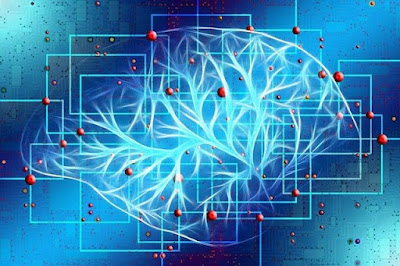5 edge AI trends to watch out for in 2022
The demand for edge computing will increase significantly. This was driven by the coronavirus pandemic, the need for efficient business processes, and major advances in the Internet of Things (IoT), 5G, and artificial intelligence (AI).
For example, a study published by IBM in May found that 94% of corporate executives surveyed said their organizations would deploy edge computing within the next five years.
From smart hospitals to cities , cashierless stores and autonomous vehicles , edge AI, the fusion of edge computing and AI, is more needed than ever.
Businesses are currently facing tremendous challenges due to logistical issues, workforce shortages, inflation and uncertainty from the continuing coronavirus pandemic. However, edge AI solutions serve as a bridge between humans and machines, and can be used to improve forecasts, assign workers, design products, and logistically.
Here are 5 edge AI trends NVIDIA predicts for 2022:
1. IT department that will focus on edge management
Edge computing is rapidly becoming a staple in many enterprises, but edge computing deployments are still in their infancy.
To go into production, edge AI management will be the responsibility of the IT department. In a recent report, Gartner, a market research consulting firm in the United States, stated, “In the past, edge solutions were managed by the sales department, but now the responsibility is shifted to the IT department, and companies are using IT resources to optimize costs.” told It's
IT departments will shift to cloud-native technologies to solve edge computing challenges related to manageability, security, and scale . Kubernetes, a containerized microservices platform, has emerged as the premier tool for managing large-scale edge AI applications.
Customers with IT departments already using Kubernetes in the cloud can use the experience to build their own cloud-native management solutions for the edge. Additionally , more companies will purchase third-party products such as Red Hat OpenShift , VMware Tanzu , Wind River Cloud Platform , and NVIDIA Fleet Command .
2. Expanding AI use cases at the edge
Computer vision has played a huge role in building AI at the edge. Image recognition has driven AI training, resulting in a powerful ecosystem of computer vision applications.
NVIDIA Metropolis , an application framework and developer toolset that has contributed to the creation of computer vision AI applications, has grown its partner network 100x since 2017, and now has more than 1,000 members.
Many companies are deploying or purchasing computer vision applications. Those companies leading the way in computer vision will start to lean towards multimodal solutions.
Multimodal AI takes disparate data sources and creates more intelligent applications that react to what they see, hear, and sense. These complex AI use cases include technologies such as natural language understanding, conversational AI, pose estimation, inspection, and visualization.
Multimodal AI can be combined with data storage, processing technology, input/output or sensor capabilities to deliver real-time performance at the edge for expanding use cases in robotics, healthcare, highly personalized advertising, cashierless shopping, concierge experiences, and more. .
Imagine shopping with a virtual assistant. With traditional AI, avatars can watch people pick from shelves, and voice assistants can listen to orders.
Combining two data sources, a multimodal AI-powered avatar can listen to spells, provide responses, view people's reactions, and provide additional responses based on them. With this complementary information, AI can provide a better, more interactive customer experience.
3. Convergence of AI and industrial IoT solutions
The intelligent factory is another place where new edge AI applications will come into play. According to the same Gartner report above, “By 2027, machine learning in the form of deep learning will account for more than 65% of edge use cases. “This is a significant increase from less than 10 percent in 2021.”
Factories can add AI applications to cameras and other sensors for inspection and predictive maintenance. But detection is just the beginning. Once a problem is detected, action is required.
After the AI application detects anomalies or defects, it alerts you to human intervention. But for safety applications or other use cases that require immediate action, IoT platforms that manage assembly lines, robotic arms, pick-and-place machines, and more, connect with AI inference applications to respond in real time.
The coupling between these applications relies on custom development work. This is expected to further strengthen the partnership between AI and existing IoT management platforms that simplify the adoption of edge AI in industrial environments.
4. Increasing number of companies adopting 5G AI
5G’s AI-integrated computing infrastructure provides a high-performance, secure connectivity fabric that integrates sensors, computing platforms, and AI applications on-site, on-premises or in the cloud.
Key strengths of this infrastructure include ultra-low latency in wireless environments, guaranteed quality of service, and improved security.
5G’s AI infrastructure creates new edge AI use cases.
Industry 4.0 : plant automation, factory robots, monitoring, inspection.
Automation Systems : Toll road and vehicle telemetry applications.
Smart Spaces : Retail, Smart Cities, Supply Chain Applications.
Mavenir Edge AI , one of the world's first full-stack 5G AI platforms, was introduced last November. In the coming year, additional full-stack solutions are expected to deliver the performance, management, and scale of enterprise 5G environments.
5. AI lifecycle management from cloud to edge
For organizations that have deployed edge AI, MLOps will play a key role in driving the flow of data from edge to edge. Gathering new and interesting data or information at the edge, retraining the model, testing the application, and then relocating it to the edge improves model accuracy and results.
While updates may be on a quarterly or yearly basis with traditional software, AI offers significant benefits due to its continuous update cycle.
MLOps is still in its infancy, with many large enterprises and startups building solutions for the ongoing need for AI technology updates. Currently, the focus is primarily on solving data center problems, but in the future, these solutions will shift to edge computing.


Comments